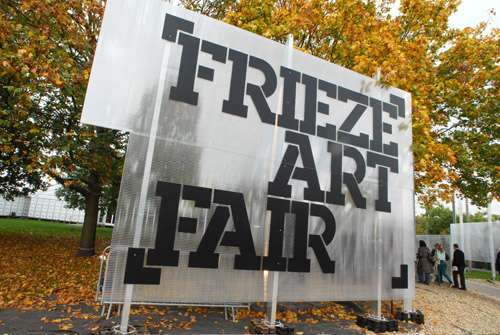Using waste vegetable biodiesel at major events works!
In the summer of 2011, both Reading and Leeds festivals endeavoured to procure biodiesel for fuelling some of their generators. Both were employing energy contractors, whom they have previously worked with, to supply a target percentage of biodiesel in some generators at the festivals. These contractors were contractually bound to provide data on the actual fuel consumption after both Reading and Leeds. However, Leeds’ contractor had more experience with providing biodiesel and had an established supply network.
Leeds managed to procure 18.52% of their energy from biodiesel in 2010, and managed to up this supply to 24.53% by 2011. This brought Leeds very close to meeting its 25.95% biodiesel target for 2011.
In 2010, Reading managed 12.51% biodiesel. This proportion then dropped to just 8.53% in 2011, despite the target being raised that year to 20.85% of the overall energy supply. Then in 2012 they brought this figure up to 18.24%, much closer to their initial target.
A variety of factors influenced the two different contractors in their ability to supply to required amount of biodiesel to each festival. This included a limited biodiesel supply in certain parts of the country, as well as a lack of suppliers. Biodiesel is also subject to price fluctuations. Complexities and important points to note in such a process include: how prepared contractors are in terms of equipment and sourcing to deliver on specific targets such as alternative energy supplies, how accurate power demand estimates are compared to actual demand, communication and feedback between the festival and the contractor.
Despite some teething problems with supplies, commitment to Waste Vegetable Oil biodiesel to subsidise the energy supply at such well known, large capacity festival is commendable, and will hopefully continue to grow. Early reports following the summer’s breakdown confirm that Reading and Leeds Festivals both managed to meet biodiesel substitution targets for the 2013 festivals. Reading’s fuel consumption included 21,600 litres of biodiesel and Leeds worked with 14,400 litres of biodiesel in the summer of 2013. The use of some solar energy at the festivals almost came to fruition in 2013, but in the end this was not deemed financially viable and wholly suitable. It can hopefully be pursued next year.
One of the main energy efficiency improvements of 2013 is that 50 of Reading and Leeds festivals’ generators on site were being monitored. Energy readings are being collated to establish just how much energy was used onsite. The figure for peak loads can be compared with the generator original power specs. This will give an indication of whether or not the generator was oversized for its purpose. Having the right capacity generator saves fuel and reduces the chance of damaging or reducing the device’s lifespan. This is one of the main ways to increase energy efficiency at festivals, making it an extremely important factor to consider.
International art fair switches to ‘diesel frieze zone’ using WVO biodeisel
Frieze Art Fair took the icy plunge into the depths of energy emissions reduction in 2009, but hasn’t looked back since warming to waste vegetable oil run generators.
The provision of a £20,000 fund from the Greater London Authority allowed Frieze Art Fair, the second largest art fair in the world after Basel, to steer away from using diesel as the main fuel supply for the fair.
This grant allowed for the establishment of an industry steering group to carry out industry consultation for the development of a series of targeted interventions to reduce Frieze’s carbon emissions. An ambitious 60% carbon emissions reduction target for the creative industries was set, reflecting the same overall target for reduction of London’s emissions for 2025.
The largest environmental impacts of Frieze Art Fair were identified through carbon audits from 2007 and 2009. The realisation that diesel generators were one of the biggest contributors to the Fair’s carbon footprint was the impetus to find an alternative way to power this event that has attracted over 60,000 visitors in recent years. It was important to work with contractors to improve the environmental performance of the Fair in a way that was practical and fitted into their current working practices. The use of biodiesel generators to power the event was first piloted in 2009, which progressed on the event using exclusively WVO biodiesel generators in 2010. This immediately reduced the Fair’s associated carbon emissions by 60%. They generate the heat and electricity, and 300W halogen floodlights have been replaced by 70W metal halides to increase energy efficiency. Working closely with their site management team, 20-20 Events, helped in the development of the Fair’s environmental infrastructure, improved the data collection process, and facilitate partnerships with contractors and stakeholders. This change in fuel, along with other measures, have resulted in the carbon footprint per visitor in 2010 being recorded as only 0.25kg CO2e, down 90% on previous years.
Success in renewable energy
Over the last five years, Shambala has consistently reduced their fuel dependency by transitioning to renewables and improving on efficiency. In 2013, Shambala was powered by 93% WVO bio-diesel, 1% solar and 6% red diesel – 100% of which was consumed by tower lights. The ambition to be 100% renewable was achieved in 2014 by using biofuel and solar hybrid systems across the site. Onsite biodiesel consumption was reduced by 20% from 2013 to 2014 by using hybrid systems, and there was a 380% kWh increase of renewable energy, which included stages run completely on solar and pedal power.
To assist in reducing the over-specification of generators, Shambala works with their power supplier to gather the power requirements of all end-users. It is also built into their contract that fuel savings are expected year-on-year, with a fixed fee on biofuel costs to create an incentive for the contractor to reduce usage wherever possible. In addition Shambala stipulate detailed energy monitoring throughout the event, a generator-by-generator post event report, and recommendations for future efficiency gains.
In 2015, the set-up included 22 bio-diesel generators, the full range of Firefly’s Cygnus Hybrid Power, 35 portable solar fold-arrays and 10 power packs. All of the site lighting was LED, 12km of festoon lighting and 105 LED Floods; the tower lights were all HPG.
Shambala Festival has reduced its energy-related GHG emissions per audience day by 39.5% between 2013 and 2014, and has reduced its overall onsite carbon footprint by 81% over 5 years. In 2015, energy (including bottled gas for traders) accounted for 19.6% of the onsite carbon footprint and only 8.53% of the overall footprint when including travel.
An analysis of the costs of energy at the festival over seven years shows that budget per person per day for energy has not increased in real terms, representing a saving if inflation and fuel costs rises are accounted for. Whilst the costs of certain items of equipment hire have been higher comparable to traditional diesel generators in some years, the reduction in total equipment requirements and generator sizes — due to efficiency savings — and in fuel use has outweighed these resulting in cost savings overall.
Thanks to Shambala for the information for this case study.



